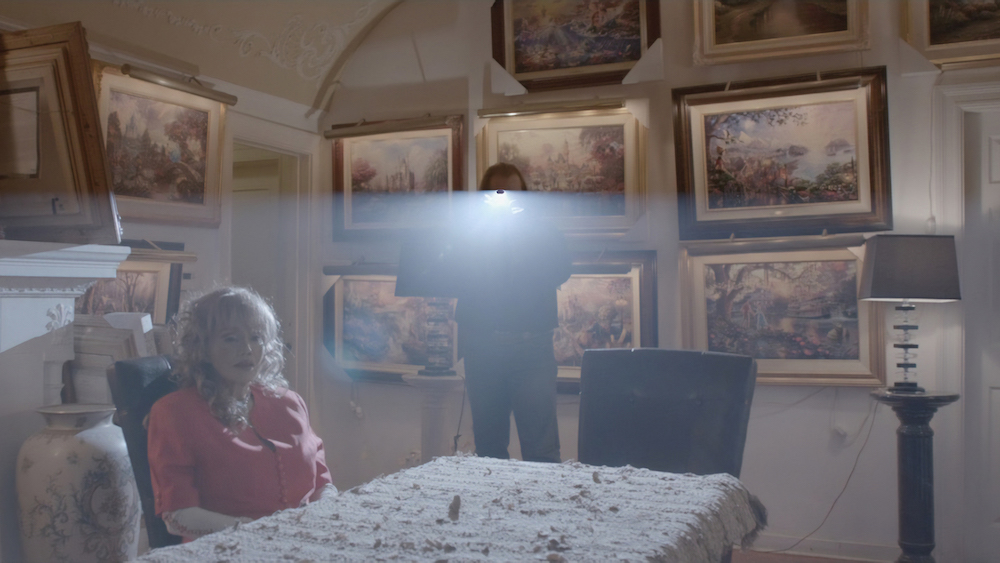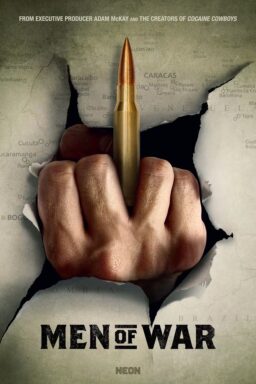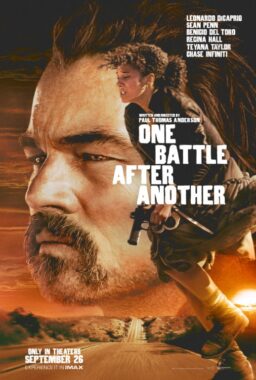My third trip to Columbia, Missouri to attend the True/False film festival confirms that the setting has become a source of comfort in these trying times. Each year, talented filmmakers, artists, writers, and journalists convene to witness the year’s best crop of non-fiction filmmaking. In between films, they soak up great food, cheap drinks, and smart talk. The festival’s precise, specific programming identity has always been its greatest asset, and this year was no exception. Programmers Chris Boeckmann, Abby Sun, and Amir George put together a lineup that challenges instead of placates and embodies diversity rather than merely paying it lip service. Its lack of cynicism and its commitment to promoting/exhibiting capital-A Art never fails to overwhelm me, especially considering it exists adjacent to an industry defined by slick, commercial interests. I’m eminently grateful to take a minor part in such a joyous excursion each year.
Over the course of five days, I saw many films that raised provocative questions, shined a light on unseen corners of the world, and remained in my head long after I left the theater. Here is the first of two dispatches from the festival.
“Over the Rainbow”
Popular documentaries like Alex Gibney’s “Going Clear” and the A&E series “Leah Remini: Scientology and the Aftermath” might have exhausted new information about the controversial religion, not to mention sated audiences’ appetites for disturbing scoops about cult-like brainwashing. However, director Jeffrey Peixoto doesn’t adopt an exposé angle with his experiential feature “Over the Rainbow,” which has no fresh revelations about Scientology. Instead, he takes an observational tact by interviewing current and former Scientology members about the origins of their New Age faith. Peixoto spent almost a decade gaining the trust of his subjects and, subsequently, their confidence in his project shines through the film. In turn, “Over the Rainbow” becomes a compassionate, nuanced discourse on faith as an operating principle in one’s life, especially when the religion in question is in its most nascent stage.
Given what we already know about L. Ron Hubbard, David Miscavige, and the organization’s history of abuse, it’s tempting to think that Peixoto takes a naïve, even immoral, stance with “Over the Rainbow.” Does giving documentary subjects the space to wax poetic about their history with Scientology amount to a tacit endorsement of the religion itself? That might be the case if Peixoto’s formal approach didn’t systematically defamiliarize the vast majority of “Over the Rainbow’s” participants. Aided by an unnerving score from Australian electronic group HTRK, Peixoto films the Scientology members in lingering long takes that render their visages alien and unknowable. (It’s no coincidence that “Over the Rainbow” opens with a discussion of the psychology of UFO abductees.) In between the interviews, Peixoto fills the frame with ominous B-roll footage of Scientology retreats that compliments equally ominous footage of anonymous strangers walking in an urban metropolis or abandoned country roads. All life becomes a series of abstract, alienating enigmas when viewed through a narrow worldview.
“Over the Rainbow” doesn’t unsettle because of what its subjects explain or disclose but rather how Peixoto presents them, i.e. people who have gotten so in touch with themselves that their relationship with the rest of the world has been corrupted. The gap between the subjects’ comfort on camera and their non-fiction staging creates a nerve-wracking liminal expanse for the viewer. “Over the Rainbow” might run the risk of confirming pre-conceived biases from those within or adjacent of the organization, but to claim there’s no moral dimension to the film would be abjectly false.

“Midnight Traveler”
Hassan Fazili’s “Midnight Traveler” might be the most compelling argument for the iPhone (and, presumably, Cloud storage) as the best available vehicle for vérité filmmaking. Fazili brings gripping immediacy to his three-year, 3,500-mile asylum journey from Afghanistan to Germany after he and his family are targeted by the Taliban. Three different iPhones capture the danger and uncertainty inherent in such a voyage: Fazili and his family are often forced to sleep in the woods or in abject housing conditions while facing prejudice because of their refugee status. Yet, Fazili, a sentimentalist as well as a staunchly political filmmaker, also includes plenty of warm scenes with his family as they try to carve out something that resembles a normal life amidst the global chaos. (It helps that his two young daughters, Nargis and Zahra, are adorable testaments to the resiliency of children.) An existential road film with life-or-death stakes, “Midnight Traveler” presents a ground-floor portrayal of the refugee crisis that smartly privileges experience over solutions.
Screenwriter and editor Emelie Coleman Mahdavian deserves credit for shaping a lucid narrative from hundreds of hours of footage, even if, as a result, “Midnight Traveler” occasionally suffers from a neat storytelling sensibility. It’s not difficult to imagine a fiction adaptation of Fazili’s film, considering that all the A-to-B, three-act elements are already present. However, Mahdavian finds sideways approaches to Fazili’s story that impress, e.g. close-ups of Zahra’s bedbug bites that cover her arms and face communicates the dehumanizing condition of refugee camps better than standard B-roll footage. Interestingly, “Midnight Traveler” introduces but never resolves the tension between Fazili’s filmmaking impulses and the responsibility he feels towards his family. Whenever Fazili’s wife, Fatima, implores him to stop filming, he almost always refuses. Later, when Zahra goes missing for an hour, Fazili chastises himself for even considering how he might film her safe return. It’s an overwhelming concern, but one that’s dwarfed by the myriad practical complications Fazili and his family face as they try to find safekeeping.
Similarly, the way “Midnight Traveler” touches upon, but doesn’t directly analyze, a litany of political issues—xenophobic bigotry towards global migrants, the hijab as a symbol of oppression and/or cultural pride, broad institutional failures to protect marginalized communities fleeing state violence—only amplifies their resonance. These topics are the fabric of Fazili’s life, not abstract notions primed for TV pundit debate. It’s a feature not a bug that Fazili and Mahdavian allow these ideas to pulsate in the background rather than touting them front-and-center for easy liberal digestion. Sometimes the best tactic is to let the footage speak for itself.

“Treasure Island”
One of the more whimsical entries at True/False this year, “Treasure Island” offers a broad portrait of a suburban Parisian water park. Director Guillaume Brac exploits his unfettered access to capture multiple groups that flow amongst each other: jubilant swimmers itching for a good time, exhausted security guards who try to keep kids from sneaking inside the park without paying, and administrators making decisions behind closed doors that keep the lights on and people safe. The park’s recreational modus operandi connects them all even if their intentions are at cross-purposes.
Brac crafts a hazy, semi-utopian landscape in “Treasure Island”; it’s a place where multiculturalism exists without much consequence and life’s nasty realities are elided for fun under the sun. Splashes and joyous screams dominate the sound mix. Teens and twentysomethings eagerly flirt with each other in between awe-inspiring water stunts. In this regard, “Treasure Island” embraces its liberated French core: a sequence featuring a hunky lifeguard and two young women culminates with his arms around both of them, smirking up a storm, and repeating the mantra, “Life is great.” Brac contrasts the park’s charged adult energy with scenes of children embarking on their own carefree parallel journeys, as if to suggest that the space exists to be consumed from multiple vantage points. Frederick Wiseman’s institutional approach meets a pop sensibility in “Treasure Island,” which is content to privilege leisure over sharp insight.

“Let It Burn”
Maíra Bühler makes the admirable choice to resist almost all exposition for her film “Let It Burn,” a profile of São Paulo’s Parque Dom Pedro hostel that houses and employs drug addicts, until the very end. It’s only then that she explains that Brazil’s newly elected conservative government plans to shutter the harm reduction program that keeps this community off the streets. This choice retroactively provides weight to the purely observational film that otherwise offers dignity to people written off by society at large.
Culled together from four years of footage, “Let It Burn” carves room for strung-out citizens to exist outside of a punitive system, illustrating how their addictions operate while refusing to let it wholly define them. Men and women frequently break out into song, cannily performing for the camera and themselves. Violence permeates the environment but it’s presented as an unfortunate byproduct of a program designed to support instead of punish. Idealistic activists who run the hostel strive to keep the order while maintaining empathy for their charges. Lovers quarrel and make up. Tenants ride the elevator for amusement as much as they use it for transportation. Even as “Let It Burn” occasionally gets mired in repetitive rhythms, or too frequently loiters in overly familiar footage, Bühler’s generous eye keeps the whole project afloat. Judgment isn’t in Bühler’s vocabulary. Instead, “care” is the operative emotional framework.

“A Wild Stream”
Two men bonded by circumstance on the coast of Sea of Cortez, Omar and Chilo spend their days fishing and their nights drinking in a shack. Though not fast friends, they eventually reach an appreciably understanding of each other, partially because their isolation from larger society necessitates a relationship of some sort.
Their chemistry grounds Nuria Ibáñez Castañeda’s “A Wild Stream,” which splits its time between character study and regional portraiture. She captures the sea as a prideful entity, one that will exist long after Omar and Chilo have gone, but emphasizes the loneliness of the men who dedicate their lives to its upkeep. Castañeda strips away the rest of the world from her frame and only hints at a larger world outside of Omar and Chilo’s eye line. Thus, the coast becomes a confessional space for Omar and Chilo; they’re cautiously vulnerable with each other while maintaining enough emotional distance so that neither gets too uncomfortable. Suggestions of past lives, lost children, and scummy citizenry are bandied about, but Castañeda never pushes for explication. This approach might render “A Wild Stream” an opaque work for some, but any time the film threatens to get into the weeds, Castañeda returns to fishing and the mundane joys of working with ones hands. It turns out that nature and friendship are still sustainable resources.
To read part two of Vikram Murthi’s True/False coverage, click here












